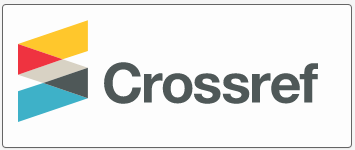On numerals in Georgian Sign language (GESL)
DOI:
https://doi.org/10.52340/idw.2023.33Keywords:
Georgian Sign Language, GESL, numerals, morphology, ordinal numerals, cardinal numerals, sign languagesAbstract
Georgian sign language (GESL) is a language of Deaf and Hard of Hearing (DHH) people in Georgia. There are about 2 500 DHH in the country. They are bilinguals – having two native languages: GESL and spoken Georgian. Thus, they expect to have the bilingual education in schools.
Numerals in all languages are morphological denoting the number, order or part. Accordingly, numerals can be cardinal, ordinal or fractional/distributive. GESL repeats the universal approach of languages to number. Almost all sign languages use expected combinations of fingers to represent a number, and it concerns to cardinal numerals.
Sign languages have pentagram systems, a number is transmitted with the fingers of the hand and this is the most convenient system, while many spoken languages use decimal system or system of twenty – as spoken Georgian. Actually, in spoken languages the four most common number system types are:
- Decimal number system (Base 10)
- Binary number system (Base 2)
- Octal number system (Base 8)
- Hexadecimal number system (Base 16)
This difference between the counting systems of spoken Georgian and GESL must be carefully taken into account while teaching cardinal numerals to Deaf children in Georgia.
In general, sign languages are not characterized by a system of marking affixes of segmental morphology, although the separation of morphemes and derivational affixes still occur in some sign languages. GESL shows a special system in this respect. Ordinal numerals are produced by adding an ordinal sign, and this is a derivational suffix, which is a completely delexicalized affix.
Interestingly, GESL shows the numeral incorporation as well.
It is important that GESL has proper morpho-lexical means to convey the system of numerals.
Downloads
References
• მახარობლიძე თ. (2015) ქართული ჟესტურის ენის ლექსიკონი. ილიას სახელმწიფო უნივერსიტეტი, შოთა რუსთაველის ეროვნული სამეცნიერო ფონდი. თბილისი. ISBN 978-9941-16-225-5 1368 gv.
• მახარობლიძე თ. (2012) ქართული ჟესტური ენა. ტრენინგის სახელმძღვანელო. მესამე საფეხური, რვეული ტრენინგის მონაწილეებისათვის. საქართველოს განათლებისა და მეცნიერების სამინისტრო. USAID, Save The Children International. თბილისი
• თამარ მახარობლიძე (2017) მათემატიკურ ნიშნებთან დაკავშირებული ზოგი საკითხი ქართულ ჟესტურ ენაში. “ენა და კულტურა - 18“ ჰუმანიტარულ და პედაგოგიკურ მეცნიერებათა განვითარების ფონდი, აკაკი წერეთლის სახელმწიფო უნივერსიტეტი. ქუთაისი. გვ. 51-58
• Barriga Puente, Francisco. 1998. Los sistemas de numeración indoamericanos: Un enfoque areotipológico. Ciudad de México: Universidad Nacional Autónoma de México.
• Chinchor, Nancy Ann. 1982. Morphological theory and numeral incorporation in American Sign Language. Providence, RI: Brown University doctoral dissertation.
• Comrie, Bernard. 1997. Some problems in the theory and typology of numeral systems. In Bohumil Palek (ed.), Proceedings of LP’ 96. Typology: Prototypes, item orderings and universals, 41– 56. Praha: Charles University Press.
• Comrie, Bernard. 2005a. Numeral bases. In Haspelmath et al. (eds.) 2005, 530–533.
• Fuentes, Mariana, María Ignacia Massone, María del Pilar Fernández-Viader & Alejandro Makotrinsky. 2010. Numeral-incorporating roots in numeral systems: A comparative analysis of two sign languages. Sign Language Studies 11. 55–75.
• Gil, David. 2005. Distributive numerals. In Haspelmath et al. (eds.) 2005, 222–225.
• Greenberg, Joseph H. 1978. Generalizations about numeral systems. In Joseph H. Greenberg (ed.), Universals of human language, Vol. 3: Word structure, 249–297. Stanford, CA: Stanford University Press.
• Hanke, Thomas. 2010. Additional rarities in the typology of numerals. In Jan Wohlgemuth & Michael Cysouw (eds.), Rethinking universals: How rarities affect linguistic theory, 61–89. Berlin: De Gruyter.
• Hurford, James R. 1975. The linguistic theory of numerals. Cambridge: Cambridge University Press.
• Hurford, James R. 1987. Language and number: The emergence of a cognitive system. Oxford: Blackwell. Hymes, Virginia Dosch. 1955. Athapascan numeral systems. International Journal of American Linguistics 21. 6–45.
• Meir, Irit, Wendy Sandler, Carol Padden & Mark Aronoff. 2010. Emerging sign languages. In Marc Marschark & Patricia Elizabeth Spencer (eds.), Oxford handbook of deaf studies, language and education, Vol. 2, 267–280. Oxford: Oxford University Press.
• Zeshan Ulrike, Cesar Ernesto Escobedo Delgado, Hasan Dikyuva, Sibaji Panda and Connie de Vos (2013) Cardinal numerals in rural sign languages: Approaching cross-modal typology. Linguistic Typology. De Gruyter Mouton. https://doi.org/10.1515/lity-2013-0019







